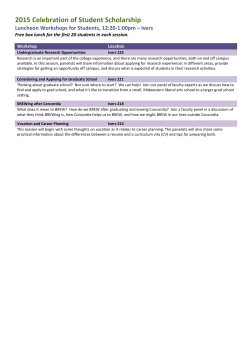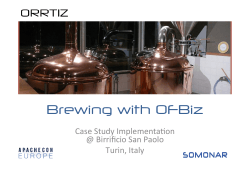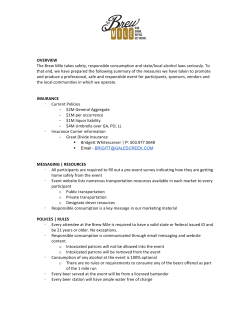
Don`t Be Left Out In The Cold â A Primer On Cold
4/1/15 Don’t Be Le* Out In The Cold – A Primer On Cold Brew And Food Safety Lorenzo Perkins Allen Leibowitz Page 1 Introductions • Lorenzo Perkins Director Of Education Cuvée Coffee Austin, TX • Allen Leibowitz Independent Consulting Houston, TX Which Are Food Products? 1 4/1/15 Cold Brew End Use • In-house – On tap – Put in container, concentrate or ready-to-drink (RTD) – Kegged • Wholesaled to customers – Kegs – Containers • Distributed – shelf stable Considerations • • • • • Processing environment Correct food-handling procedures Cleanliness of packaging and equipment Refrigeration “Shelf-life” Microorganisms • Present in our environment • Some are worse then others • Controlled by different methods • • • • Refrigeration Acidification Pasteurization High Pressure Processing (HPP) • Goal is to reduce the harmful ones 2 4/1/15 Affects Of Processing • • • • Flavor Color Acidity Clarity Brewing In-house • Goals – Very specific flavor, sensory experience – Consistency – Needed to scale for demand Brewing • Product delivered in kegs and in cans • Brewing vessels are cleaned and sanitized using industry standard techniques • Kegs and cans are cleaned using industry standard techniques before filling 3 4/1/15 Storage • Product is kept refrigerated. – After production – Through distribution – To the end user Shelf-stable RTD Additional considerations Microbial reduction Processed in a registered facility Microbial Reduction • Many well documented methods Some newer methods – Pasteurization (varying time/temp) standards – High Pressure Processing (HPP) – Irradiation – Aseptic • Low-acid (pH above 4.6) have additional requirements 4 4/1/15 Low-acid Canned Food (LACF) Cold brew coffee (observed) pH 5.2 -5.4 • Concerns are certain life-threatening hazards in some LACF • Clostridium botulinum (C. bot) – Anearobic – Spores are heat resistant – Grows in pH between 4.8 and 7.0 What Do You Do? Choices - Each affects the product • Lower the pH • Process at very high-temp • High ratio of dissolved sugar • Storage at temps below 38°F (3°C) • Produce a challenge study Lower the pH • • • • Add an acidulent Wide array of acids Other “natural flavors” Taste, color? 5 4/1/15 High Temp • Needs to be around 280°F (138°C) • Processed in a retort – high pressure • Significantly alters taste and color Challenge Study • Demonstrate that (LACF) product does not support the growth of C. bot. • No publicly available study for coffee • Real-time study for shelf-life • Specialized labs • Expensive Contact Information • Lorenzo Perkins Cuvée Coffee lorenzoperkins@gmail.com • Allen Leibowitz Espresso Lab aleibowitz@gmail.com 6
© Copyright 2025










